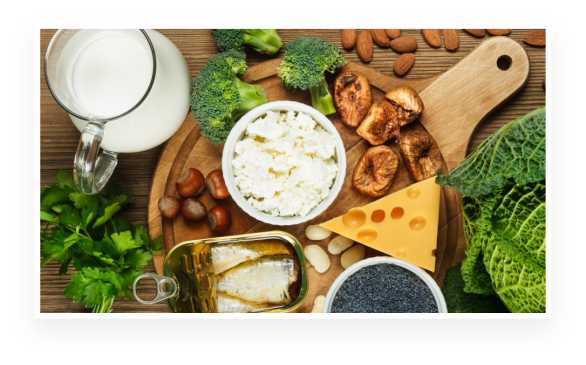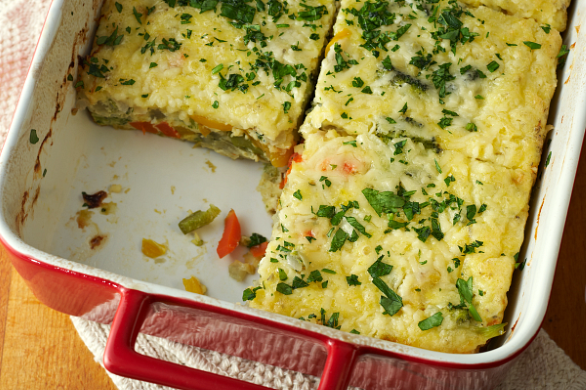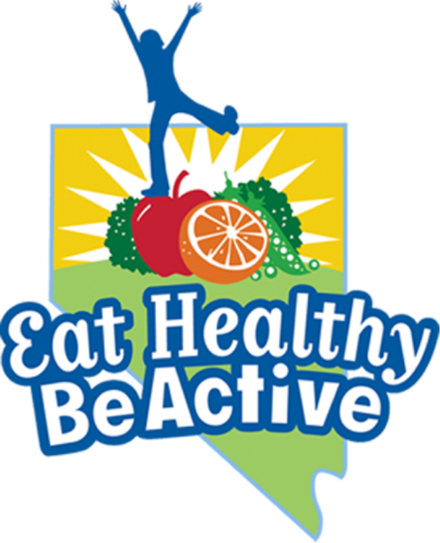In this edition
- Give your body a health boost by eating more fresh fruit and vegetables
- I don’t drink milk. What should I have instead for calcium?
- Frittata Recipe
- SNAP-Ed Nevada
About the Newsletter
To celebrate National Fresh Fruit and Vegetable Month you'll want to read our featured article, by Sabina Malik, assistant professor and extension specialist in community health and food systems. This month we also celebrate National Dairy month with ways to get calcium even if you don't drink milk or eat dairy and National Egg month with a healthy and vegetable filled frittata. Don't forget to visit SNAP-Ed Nevada for more information on eating healthy, being active and shopping smart.
Give your body a health boost by eating more fresh fruit and vegetables

Sabina Malike, PhD
Let’s find ways to make nutrition easier. Focus on four main needs as we age: protein, calcium, vitamin D and vit amin B12. All are readily available in your favorite green salad. There are many supplement options out there, but the best way for your body to absorb these nutrients is naturally through your diet.
Getting daily protein improves muscle mass and healing. Aim for getting between 5 to 6.5 oz. a day (3 oz. of protein is about the size of a deck of cards) by adding protein sources at each meal.
Great sources are in corn, broccoli, asparagus and brussels sprouts. Add in flax or chia seeds, garbanzo beans, quinoa, lentils or nuts for easy snack mixes and salad toppers that will last in your pantry.
Calcium (rebuild bones and osteoporosis prevention) is often delivered in dairy products. They are actually fortified sources, meaning nutrients are added while getting items market ready. If dairy upsets your digestion, try other great sources in green leafy vegetables like kale, bok choy, collard greens or broccoli and most nuts.
Vitamin D pairs with calcium for bone health and provides improved immunity. Pair a 10-minute stroll in the sunlight with vitamin D fortified orange juice or mushrooms. Vitamin B12 has also been shown to improve your brain. An incredibly important part of your nutrition is found in apples, bananas, blueberries, oranges and mangos.
Not excited by the thought of a lush leafy green salad each day? Season and roast your veggies in the oven. Turn them into a soup. Make a smoothie. There’s plenty of alternatives to get your vitamins in a delicious way. Does your produce wilt away before you even get to use it? Help them last longer with proper storage techniques:
•Prolong your asparagus by cutting off the stems and storing them in a glass of water in the fridge.
•Re-use your large finished yogurt container to store your leafy green veggies.
•Place paper napkins between the layers to absorbmoisture.
•Store apples, bananas, onions and potatoes separate from everything else and at roomtemperature.
•Peel and cut fruit, chop and blanch green leafy veggies and store them in your freezer for up to 3months.
•Freeze herbs with some olive oil in ice cube trays for quick easy recipe starters year-round.
•Remove the green tops off root vegetables likecarrots, beets or turnips for use in soups.
•Or place them in a shallow bowl of water andregrow them. Move them to a pot of soil once yousee new leaves.
Although some pandemic-timed SNAP benefits have been discontinued, there are many new programs that are being tested out right now. Research and keep informed of the new SNAP changes. SNAP benefits are also available for use at farmers markets throughout the state.
To read more on our featured author
I don’t drink milk. What should I have instead for calcium?

Alternate food sources for calcium
June is National Dairy Month. Milk and milk products contain lots of calcium. Calcium is vital for healthy bones and teeth. If you don’t drink milk, there are other foods you can get calcium from like yogurt and cheese. If you avoid dairy altogether, you can get calcium from calcium fortified alternative milks (soymilk, almond milk) tofu, sardines and pinto beans. Many vegetables also contain calcium including bok choy, broccoli and other healthy vegetables (cauliflower, brussels sprouts, rutabaga).
More information from Cooking Matters
Frittata Recipe

Cooking Matters Frittata
Not only is June National Dairy Month, but June 3 is National Egg Day and June 4 is National Cheese Day. So, if you liked our main article celebrating National Fruit and Vegetable Month, you will love this frittata recipe!
Ingredients
• 1 ½ pounds seasonal vegetables, such as broccoli, carrots, turnips or bell peppers
• 2 medium onions
• 4 ounces low-fat cheddar cheese
• 12 medium eggs
• 1 teaspoon dried dill, thyme or oregano
• Non-stick cooking spray
• ½ teaspoon salt
• ¼ teaspoon ground black pepper
• 8 ounces mushrooms, optional
• ¼ cup fresh parsley, thyme or basil leaves, optional
Instructions
1. Preheat oven to 350°F.
2. Rinse and cut seasonal vegetables evenly into small pieces. Peel, rinse and dice onions. If using, slice mushrooms and chop fresh herbs.
3. Grate cheddar cheese.
4. Bring a large pot of water to boil. Add seasonal vegetables (not onions and mushrooms) to boiling water. Briefly boil, for about 30 seconds. Using a colander, drain the vegetables.
5. In a large bowl, whip eggs with a fork until well blended. Whisk in dried herbs. Set it aside.
6. Coat medium skillet with non-stick cooking spray. Heat over medium high heat. Add onions and cook until soft, about 5 minutes. If using mushrooms, add now. Add boiled seasonal vegetables. Continue cooking until soft and some of their juices have evaporated, about 5 minutes more.
7. Coat 9-by-13 inch baking dish with non-stick cooking spray.
8. Layer ingredients in the baking dish in the following order; vegetables mixture, egg mixture, cheese, salt and pepper.
9. Bake until eggs are firm and cheese is melted, about 35 minutes. If you have a thermometer, insert it in the middle and it should read 160°F.
10. If using, garnish with chopped fresh herbs.
11. Cut into 8 equal size portions.
Chef’s Notes:
⇒Use any of your favorite fresh or frozen vegetables in this recipe. Cook harder vegetables first. Fresh vegetables can also be steamed until crisp-tender instead of boiled. Frozen vegetables should be boiled first as in step 4.
⇒You can make individual portions by layering vegetables, egg and cheese in a well-oiled muffin pan.
⇒Bake for 30 minutes, testing to see that the mini frittatas spring back when lightly touched.
⇒Frittata portions/muffins freeze well for up to one month.
See the recipe on the Cooking Matters page

SNAP-Ed Nevada logo
An EEO/AA institution. This material was funded by USDA’s Supplemental Nutrition Assistance Program (SNAP). This institution is an equal opportunity provider.
Visit SNAP-Ed Nevada


